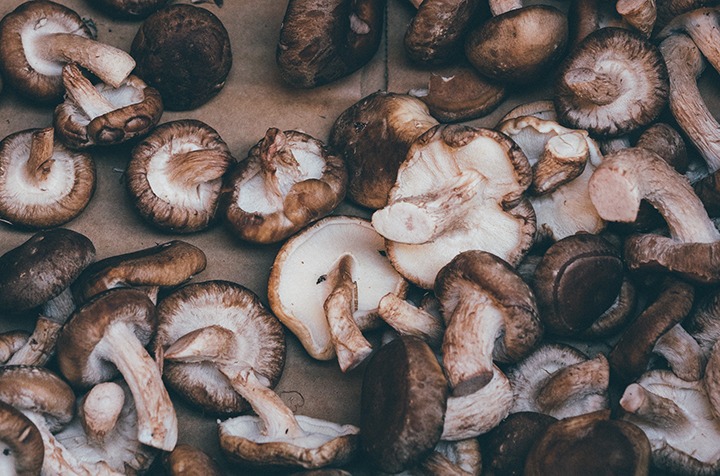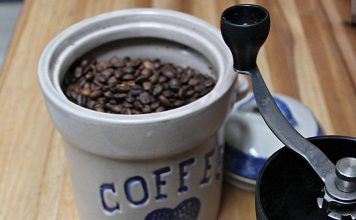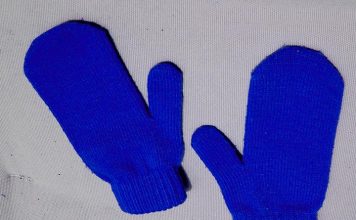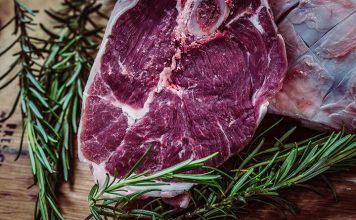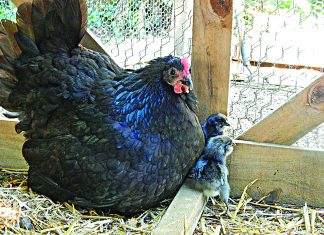 |
|
| Issue #96 • November/December, 2005 |
There’s a familiar old saying about mushrooms making meals marvelous but when it comes to the delectable shiitake, here’s a pick that goes way beyond the call of duty. Aside from being top choice for the pan, the healthful benefits of eating shiitake mushrooms make them even more to marvel over.
Shiitake (Lentinus edodes belonging to the Tricholomataceae family) is a forest mushroom native to Japan, China and Korea. The Japanese name, shiitake (shee-tah-kay) is derived from “shii” meaning the shiia or oak tree on which they grow and “take” meaning mushroom. In China, shiitake is known as hsaing ku, which means fragrant mushroom.
|
Shiitakes are deeply rooted in Asian history with the first mention of them dating back to 199AD when natives of Kyushu presented the emperor with a gift of the prized woodland gathering. During the Ming Dynasty (1368-1644), the mushrooms were considered the “elixir of life” and were a reserved pick to be enjoyed only by the emperor and his family.
Ancient Oriental healers prescribed shiitake for a host of ailments including cold, flu, sinus, headache, measles, worms, constipation, hemorrhoids, gout, liver disorders, nutritional deficiencies, poor circulation, and sexual dysfunction. The healthful fungi has held its ground in the medicinal world for thousands of years and many modern day herbalists still recommend shiitake as treatment for the above complaints.
Even though Asian people have been cashing in on the medicinal benefits of shiitakes for almost as far back as history dates, it is only in more current times that the Western World has taken a closer look at the mushroom as being useful for lowering cholesterol, treating high blood pressure, cancer, heart disease, AIDS, herpes, and other viral infections.
Research has shown that shiitake mushrooms contain an amino acid called eritadenine, which is noted for lowering cholesterol. Findings indicated that adding shiitake to one’s diet helped lower blood cholesterol levels by almost 50 percent, especially in cases where high-cholesterol foods were eaten simultaneously with the mushroom.
|
A remarkable substance known as beta glucan, a form of natural sugar that has powerful immune-boosting and anti-cancer properties, is derived from yeast cells of shiitake. Extensive research since the 1940s has shown that beta glucan not only helps the body fight off invaders but also works as an anti-oxidant.
Beta glucan is marketed as a nutritional supplement in parts of North America, Europe, and in Asia where it is being used in hospitals in conjunction with cancer treatments to slow the growth of tumors and decrease common side effects of treatments.
Today shiitakes are the second most cultivated mushroom in the world (the button mushroom is first). Japan is the largest producer, growing about 80% of the world’s supply. Shiitakes are one of the most popular sources of protein in Asian diets and are often accredited with longevity, vitality, and sound mind.
I had my first memorable taste years ago when I discovered some delightfully chewy brown morsels in a bowl of wonton soup at a Chinese restaurant. After coaxing the secret out of a tight-lipped chef, I was pointed in the direction of shiitakes and became hooked on their unique, smoky flavor and meaty texture.
Back when I started indulging in the exotic mushrooms, they were, as far as my budget was concerned, a pricey condiment that usually had to be hunted down in specialty shops that catered to gourmet cooking. Most of the mushrooms I unearthed were sold dried by the ounce and I remember paying dearly for my addiction! Nowadays, I’m happy to report, they are more affordable and much easier to come by in both fresh and dried state.
Along with their growing popularity, shiitake mushrooms have sprung a host of new names including Chinese Black, Oriental Black, Black Forest, and Golden Oak mushroom. Regardless of tag, the taste is unmistakable and once you’ve sunk your teeth into a full-bodied shiitake, you’ll have no problem identifying one upon a future encounter.
|
With their protein-rich reputation and pleasing steak-like texture, it’s easy to see why shiitakes are popular with vegetarians and have become a number one alternative for those trying to trim down or cut meat from their diet. I find they make a very satisfying substitute for meat on pizzas, in soups, stews, rice and couscous dishes, and when added to an omelet, make a delightfully healthy stand-in for a traditional steak and egg breakfast.
Aside from being a rich source of protein, shiitakes supply niacin, riboflavin, thiamin, potassium, and iron, and are a good source of vitamins A, B, C, and when used in their sun-dried form, provide a valuable dose of Vitamin D, found in very few foods. They contain more than 50 different enzymes, including pepsin that aids digestion, and asparaginase, which is a substance that has been used to treat childhood leukemia.
Adding shiitakes to one’s diet is easy these days since they are readily available in larger supermarkets everywhere, and now mushrooms lovers can have a whole lot of fun growing their own at home. To me, nothing is more rewarding than harvesting fresh mushrooms right off my own log.
There are a number of suppliers across the country that sell commercial shiitake logs that are drilled with holes in which mushroom “spawn” has been implanted. All you have to do to grow your own is buy a log and follow the easy directions from the supplier. From start-up time to harvesting, your first feed of homegrown shiitakes is only a matter of weeks. And your log will serve you time and time again.
If your log produces more shiitakes than you can use, or if you find a super buy at the grocery store, you can dry your surplus by stringing and hanging. Fishing line or uncolored thread works great for this purpose. When mushrooms are dried, unstring and store in a paper bag on the pantry shelf where they will keep indefinitely.
Fresh shiitakes can be used in place of button or other mushrooms in almost any recipe. They are delicious grilled, fried, creamed, or added to stir-frys. One of my favorite quickie suppers calls for a handful of shiitake mushrooms sautéed in a dab of butter (or olive oil) until golden, then served atop a thick slice of garlic toast. As far as I’m concerned, this is just like having a hot steak sandwich without the fuss and muss of meat.
Dried shiitakes can be broken up and added to soups, stews, sauces or any dish calling for mushrooms. Shiitake stalks, especially those from dried mushrooms, should be removed before cooking as they are rather tough and fibrous. They can be saved up and added to stock, tucked into a bouquet garni or steeped into comforting, soothing teas, then discarded.
|
To use dried shiitakes in place of fresh mushrooms, just soak whole or broken up pieces in enough boiling water to cover for about 20 minutes or until they plump back up. They are now ready to use in place of fresh-pick and will yield a chewier texture I find most appealing. Save the soaking water to add to gravy or soup or better yet, sit down and enjoy it as a nourishing drink.
Although shiitake supplements can be bought at health food stores in gel-cap forms, powders, extracts, tinctures, and tea preparations, I find it so much more rewarding to derive the healthy benefits of shiitakes by enjoying them right at the table on my plate or in a cup. As with any such preparation, if you do opt to use shiitake supplements to treat a particular ailment, talk to your doctor first.
As far as eating shiitake mushrooms for sheer pleasureindulge until your heart is content! You’ll find that shiitakes really do make meals more marvelousnot to mention, healthy.
Try the following recipes for great eating.
Shiitake omelette
Here’s a hearty omelette that sheds a new light on the old steak and egg breakfast. Serves two, but recipe can be halved, doubled or tripled as needed.
3 fresh shiitake caps, sliced 1/4-inch thick (or 3 caps broken into fours, soaked in boiling water until plump, then patted dry on paper towels)
2 large eggs
½ Tbsp. cream
2 leaves of fresh minced basil (or pinch of dried)
½ Tbsp. butter (or vegetable oil)
salt and pepper to taste
Separate eggs. With a whisk, beat whites until stiff but not dry. Add basil to yolks, then beat, adding cream until thick and smooth. Gently fold whites into yolks.
Heat butter in heavy skillet (cast iron works very well) until sizzling. Sauté mushrooms on both sides until golden. Pour prepared eggs over top of mushrooms and cook until omelette has set. Turn gently and cook other side. Slide onto heated plate. Season with salt and pepper.
Super healthy shiitake stir-fry
Nothing is healthier than a stir-fry supper, except for one that’s done up with meaty shiitake mushrooms in place of traditional beef. This recipe does not follow strict measurements as the whole fun of stir-frying is in creating a dish to suit your own liking to a tee. If you love your platter loaded with snow peas, so be it.
1 ½ Tbsp. vegetable oil
½ Tbsp. sesame oil
½ Tbsp. fresh grated ginger
2 cloves minced garlic
8 fresh shiitake mushrooms sliced 1/4-inch thick (or dried caps prepared as above)
about 4 or 5 cups vegetables of choice cut into stir-fry fashion: onion, cauliflower, broccoli, celery, carrot, green pepper, red or yellow pepper, snow peas, green beans, water chestnuts, baby corn, or any other veggie you fancy
2 Tbsp. soy sauce
Heat oils in wok over medium heat. Add ginger and garlic and sauté until aroma is released, only a few seconds. Add shiitake mushrooms and stir with a wooden spoon for about one minute. Add prepared vegetables and stir-fry, tossing with wooden spoon until fork tender. Add soy sauce and stir until evenly coated. Serve sprinkled with toasted sesame seeds, if you wish. Goes great with steamed rice. Serves 4
Shiitake soup with rice vermicelli
4 cups water
4 dried shiitake mushroom caps, broken into small pieces
1 Tbsp. soy sauce
1 Tbsp. red chili oil (adjust to your tolerance of heat)
1 tsp. garlic powder
1 small, thinly sliced onion
½ stalk celery, sliced thin
2 Tbsp. finely chopped sweet yellow, red, or green peppers
seasoned salt and black pepper to taste
1 cup of rice vermicelli (broken into soup-sized pieces) cooked according to package directions, then rinsed under cold water
Put water in soup pot and bring to boil. Add mushrooms. Reduce heat, cover, and cook 5 minutes. Add remaining ingredients, except salt and pepper, and simmer until vegetables are soft, about 8 minutes. Add seasoned salt and pepper to taste. Stir in the rice vermicelli, and heat to boiling.
Makes 4 to 6 servings, but recipes can be halved or doubled as needed.
Shiitake tea
This satisfying tea is especially good for those with high blood pressure or high levels of blood cholesterol. Shiitake tea is a perfect drink for taking the edge off hunger pains and is excellent medicine for breaking up a cold and soothing sore muscles that often accompany flu. It can help relieve headache and stuffiness and is good for calming the nerves. A cup of shiitake tea is bound to pick you up every time.
For medicinal use:
2 dried shiitake mushroom caps, broken into bits
1 cup water
Put shiitake pieces into small kettle with water and bring to a boil. Reduce heat, cover, and simmer 30 minutes. Strain (save bits for supper) and administer in a Chinese-sized teacup. Makes enough for 4 doses to take several hours apart. Sip hot.
For pleasure drinking:
Use one mushroom cap per cup of water as above. In Japan, it’s customary to add a pinch of sea salt to the pot. When serving, make sure that each cup gets a fair share of shiitake bits and a cocktail fork or toothpick for fishing them out.
Put shiitake pieces into small kettle with water and bring to a boil. Reduce heat, cover, and simmer 30 minutes. Strain (save bits for supper) and administer in a Chinese-sized teacup. Makes enough for 4 doses to take several hours apart. Sip hot.
For pleasure drinking:
Use one mushroom cap per cup of water as above. In Japan, it’s customary to add a pinch of sea salt to the pot. When serving, make sure that each cup gets a fair share of shiitake bits and a cocktail fork or toothpick for fishing them out.


